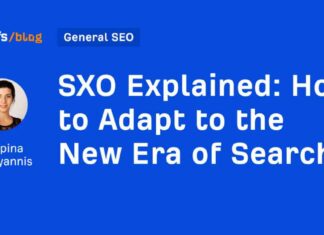Website Crawlers: The Key to Optimizing Your Site for Search Engines
Website crawling is a crucial aspect of SEO that many website owners may not fully understand. While most people have a general idea of what website crawling involves, it’s important to delve deeper into the intricacies of how it works and why it’s essential for driving organic traffic to your site. In this comprehensive guide, we will explore the nuances of website crawlers, their impact on search engine optimization (SEO), and how you can leverage them to enhance your site’s visibility and performance.
What is a Website Crawler?
A website crawler, also known as a web crawler or spiderbot, is a software program or script designed to automatically scan and index web pages on the internet. Unlike web crawlers that focus on analyzing and indexing individual web pages, website crawlers are specifically tailored to assess entire websites for various SEO parameters. These crawlers play a crucial role in determining how search engines rank and display websites in search results.
One of the most well-known web crawlers is Googlebot, Google’s proprietary crawler that meticulously navigates the web, following links from page to page, gathering data, and processing content for inclusion in Google’s search engine index. By analyzing the content of web pages, web crawlers like Googlebot can prioritize and rank pages based on their relevance and quality, ultimately impacting their visibility in search results.
The Impact of Web Crawlers on SEO
Web crawlers play a significant role in determining the indexability and rankability of web pages, which directly influences a website’s organic traffic. If your site is not optimized for web crawlers, it may struggle to attract users and rank well in search engine results. To ensure that your content is discoverable and accessible to web crawlers, it’s crucial to adhere to best practices for optimizing your site’s structure, content, and technical elements.
For example, AhrefsBot, one of the most active SEO crawlers globally, visits over 8 billion web pages every 24 hours and updates its index every 15–30 minutes. By understanding how web crawlers like AhrefsBot operate and what they prioritize, website owners can tailor their SEO strategies to align with the requirements of these crawlers, thus enhancing their site’s visibility and performance in search results.
The Website Crawling Process
The website crawling process typically involves several stages that web crawlers go through to analyze and index web pages effectively. These stages include URL discovery, crawling, parsing, indexing, ranking, crawl end, and revisiting. Each stage plays a crucial role in determining how web crawlers interact with websites and gather data for search engine indexes. By understanding these stages, website owners can optimize their sites to ensure maximum visibility and discoverability by web crawlers.
URL Discovery: When a web page is published, the web crawler discovers it and uses it as a ‘seed’ URL to initiate the crawling process. These starter URLs serve as entry points for the crawler to begin analyzing and indexing web pages.
Crawling: After URL discovery, the web page is scheduled for crawling. During this stage, the crawler downloads content such as meta tags, images, links, and structured data from the web page to the search engine’s servers for further processing.
Parsing: Parsing involves analyzing the data extracted during the crawling stage to determine how to index and rank the web page effectively. This process helps the web crawler understand the content and structure of the page to prioritize it in search results.
Indexing: Once the web page is crawled and parsed, it is indexed by the search engine, storing the data collected from the page for quick retrieval in response to user queries. Indexing enables search engines to deliver relevant search results to users based on their search queries.
Ranking: Indexed pages are ranked in search engines based on factors such as quality, relevance to search queries, and other ranking criteria. Pages that meet these criteria are displayed to users when they perform a search, influencing their visibility and click-through rates.
Crawl End: The entire crawling process, including the URL discovery loop, eventually ends based on factors such as time allocated, the number of pages crawled, and the depth of links followed. This stage marks the completion of the crawling cycle for a website.
Revisiting: Web crawlers periodically revisit web pages to check for updates, new content, or changes in structure. By revisiting web pages, crawlers can ensure that the search engine index remains up-to-date and reflects the most recent information available on the web.
How to Get Search Engines to Crawl Your Site
While search engine web crawlers operate autonomously, website owners can take proactive steps to notify crawlers of site updates and changes. By leveraging tools such as XML sitemaps, Google’s URL inspection tool, and IndexNow, website owners can prompt search engines to recrawl and index their content more efficiently. These tools allow website owners to communicate with search engine crawlers and ensure that their site’s content is accurately indexed and ranked in search results.
XML Sitemaps: An XML sitemap is a file that lists all the important pages on a website, helping search engines discover and index content accurately. By submitting an XML sitemap to search engines, website owners can facilitate the crawling and indexing of their site’s content.
Google’s URL Inspection Tool: Website owners can request Google to consider recrawling their site content through Google’s URL inspection tool in Google Search Console. This tool allows website owners to monitor the status of their URLs and ensure that Google has crawled and indexed their content effectively.
IndexNow: Instead of waiting for search engine bots to recrawl and index content, website owners can use IndexNow to automatically ping search engines like Bing, Yandex, Naver, Seznam.cz, and Yep whenever they add new pages, update existing content, remove outdated pages, or implement redirects. By leveraging IndexNow, website owners can expedite the crawling and indexing process for their site’s content.
Enhancing Search Engine Crawling Frequency
To encourage search engines to crawl more of your site’s pages more often, website owners can prioritize quality, keep content fresh, and refine their site structure. By focusing on these key areas, website owners can optimize their site for search engine crawling and ensure that their content is regularly indexed and ranked in search results. Here are some strategies to enhance search engine crawling frequency:
1. Prioritize Quality: Google PageRank evaluates the number and quality of links to a page, considering them as “votes” of importance. Pages with quality links are deemed more important and ranked higher in search results. By focusing on internal and external links, as well as improving page experience, website owners can enhance the quality of their site and attract more frequent crawls from search engines.
2. Keep Things Fresh: Regularly updating content on your site can attract more frequent crawls from search engines. Search engines like Google prioritize accurate and up-to-date information, so updating your content regularly can encourage crawlers to revisit your site more often. By monitoring crawl stats in Google Search Console and examining crawling patterns, website owners can gauge how often search engines are revisiting their site.
3. Refine Your Site Structure: Offering a clear site structure through a logical sitemap and relevant internal links can help search engines better navigate and understand your site’s hierarchy. By optimizing your site structure, website owners can improve the crawlability and indexability of their content, leading to better visibility and ranking in search results.
Crawl Budget: Crawl budget refers to the number of URLs a search engine crawler can and wants to crawl on a website. Factors such as site speed, mobile-friendliness, and site structure impact the efficiency of crawl budget allocation. By optimizing these factors, website owners can ensure that search engine crawlers can access and index their site’s content effectively.
Website Crawlers vs. Web Crawlers
While web crawlers like Googlebot focus on indexing individual web pages, website crawlers are designed to analyze entire websites for SEO parameters. Website crawlers act as private bots that simulate search engine performance, helping website owners identify and address critical SEO issues on their site. By leveraging website crawlers, website owners can gain valuable insights into how search engine crawlers interpret their pages and optimize their site for better visibility and performance.
Ahrefs Site Audit: The Ahrefs Site Audit crawler is a powerful tool that enables SEOs to analyze technical SEO issues, conduct on-demand crawls, and troubleshoot site optimization. With the capability to assess up to 170k URLs per minute, Site Audit empowers website owners to maintain and improve their visibility in search engines effectively. By utilizing Site Audit, website owners can identify and address technical SEO issues that may impact their site’s performance and ranking in search results.
Crawling Your Own Website
Website owners can crawl their own sites using tools like Ahrefs Site Audit to detect technical SEO problems and optimize their site for better performance. By configuring a crawl in Site Audit, website owners can identify errors, warnings, and notices affecting their site’s SEO and prioritize fixes to enhance their site’s visibility and ranking in search results. Site Audit provides detailed data breakdowns, site health scores, and fix recommendations to help website owners understand how search engines interpret their site and address critical issues.
Set up Your Crawl: To initiate a crawl in Site Audit, website owners can navigate to the Site Audit tab, choose an existing project, or set up a new project for their domain, subdomain, or URL. By configuring crawl settings, including crawl schedule and URL sources, website owners can start an audit to analyze their site’s SEO performance effectively.
Diagnose Top Errors: The Top Issues overview in Site Audit highlights the most pressing errors, warnings, and notices affecting a site’s SEO based on the number of URLs impacted. By addressing these issues, website owners can improve their site’s crawlability, content optimization, and overall SEO performance.
Expedite Fixes: Website owners can expedite fixes for SEO issues using Site Audit’s upcoming feature, Patches. Patches allow website owners to autonomously implement fixes for common SEO problems like title changes, missing meta descriptions, and broken links, without requiring coding knowledge or developer support. By utilizing Patches, website owners can resolve critical SEO issues quickly and efficiently.
Spot Optimization Opportunities: In addition to fixing SEO problems, website owners can leverage website crawlers to identify optimization opportunities on their site. By improving internal linking, refining site structure, and enhancing content quality, website owners can enhance their site’s visibility, ranking, and user experience.
Conclusion
Understanding website crawling and leveraging website crawlers are essential components of effective SEO strategies. By comprehending how crawlers work, optimizing your site for search engine indexing, and leveraging tools like Ahrefs Site Audit, website owners can enhance their site’s visibility, performance, and ranking in search results. By prioritizing quality, keeping content fresh, and refining site structure, website owners can encourage search engines to crawl their site more frequently, leading to improved organic traffic and search engine visibility. Website crawling is not just an SEO hack; it’s foundational knowledge that can significantly impact your site’s traffic and ROI.























